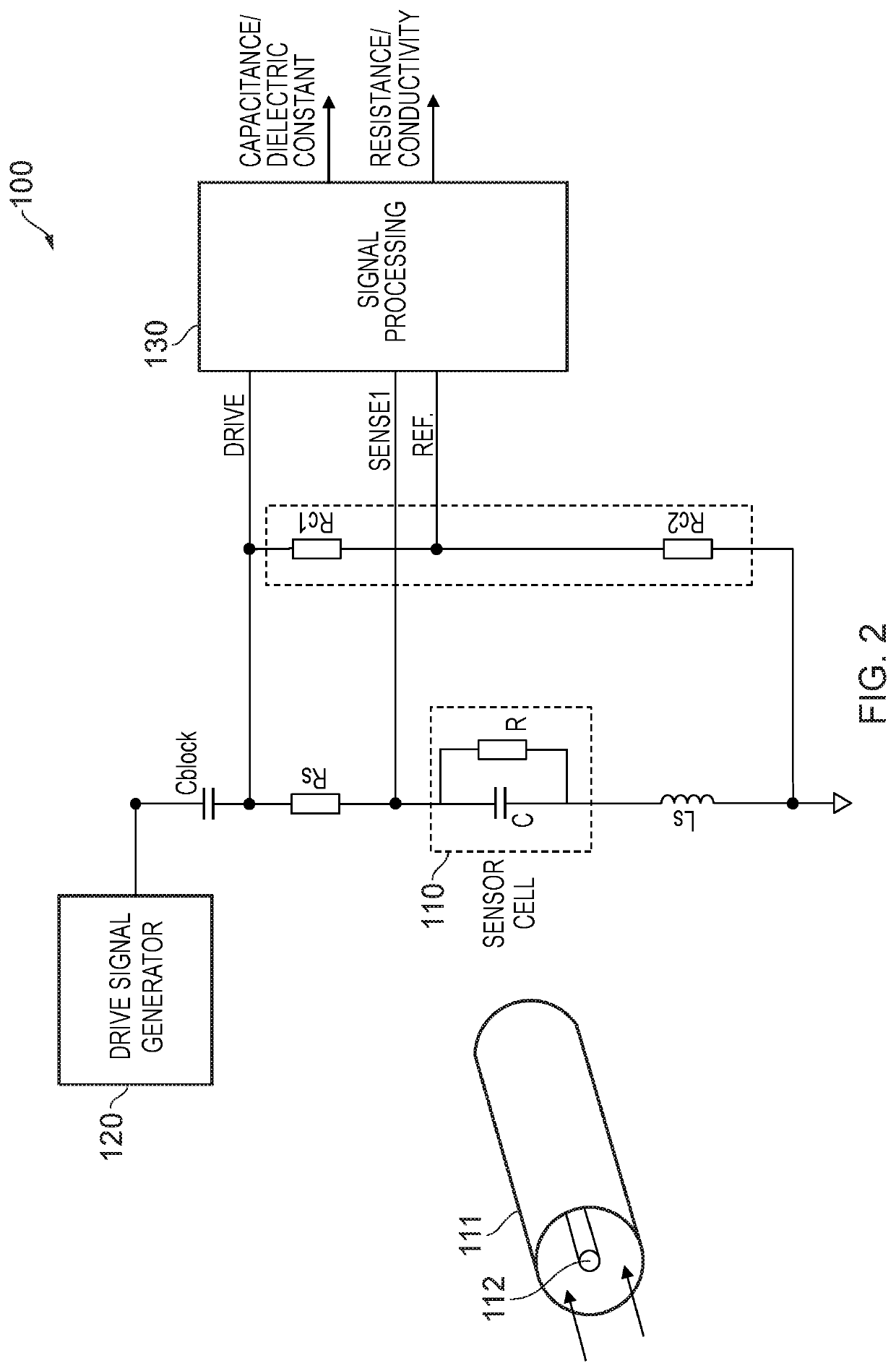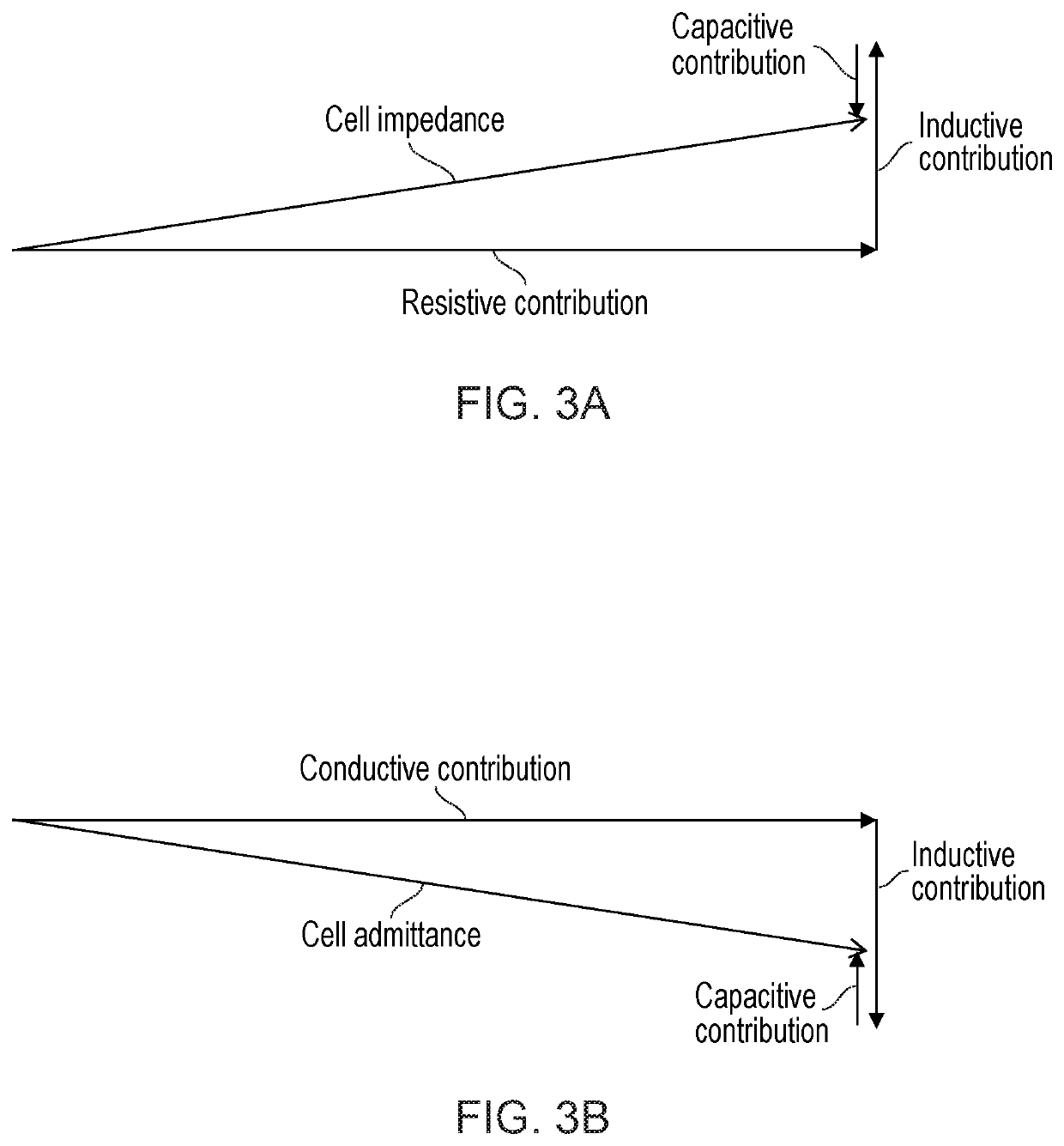Apparatus for monitoring a fluid
a technology of fluid monitoring and apparatus, which is applied in the direction of instruments, testing water, food, etc., can solve the problem of delay before an accurate temperature measurement can be read, and achieve the effect of increasing ion concentration, improving ion concentration, and reducing the number of instruments
- Summary
- Abstract
- Description
- Claims
- Application Information
AI Technical Summary
Benefits of technology
Problems solved by technology
Method used
Image
Examples
example fluids
[0375
[0376]An example application of the apparatus is to control the mixture and composition of emulsion cutting fluids. The proportion of oil to water is to be controlled. The ratio of oil to water can be determined by measuring the dielectric constant of the fluid. Water has a dielectric constant of around 80 at 20 degrees Celsius, and the oil component has a dielectric constant <10. Evaporation of water from the fluid causes the oil to water ratio to increase, and so it is necessary to add water to keep the emulsion concentration within the required limits.
[0377]Dielectric constant of the fluid is approximately equal to the average by volume of the two components, so for a 10% mix we would expect to see a dielectric constant of around 72. The surfactant used to keep the oil droplets in suspension is conductive as it has ionic components. Conductivity alone cannot be used to determine the emulsion concentration, as conductivity is affected by other factors such as water hardness a...
PUM
| Property | Measurement | Unit |
|---|---|---|
| conductivity | aaaaa | aaaaa |
| frequency | aaaaa | aaaaa |
| frequency | aaaaa | aaaaa |
Abstract
Description
Claims
Application Information
 Login to View More
Login to View More - R&D
- Intellectual Property
- Life Sciences
- Materials
- Tech Scout
- Unparalleled Data Quality
- Higher Quality Content
- 60% Fewer Hallucinations
Browse by: Latest US Patents, China's latest patents, Technical Efficacy Thesaurus, Application Domain, Technology Topic, Popular Technical Reports.
© 2025 PatSnap. All rights reserved.Legal|Privacy policy|Modern Slavery Act Transparency Statement|Sitemap|About US| Contact US: help@patsnap.com



